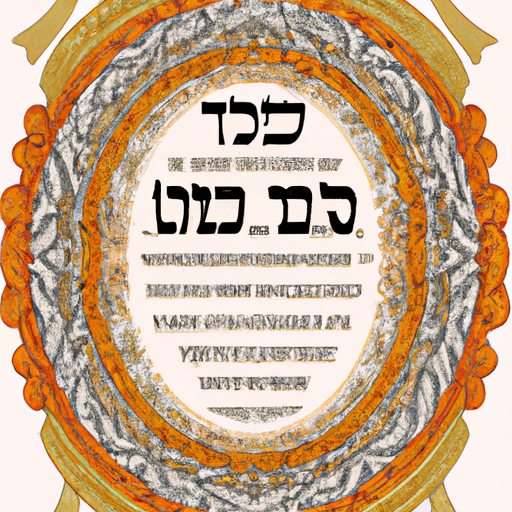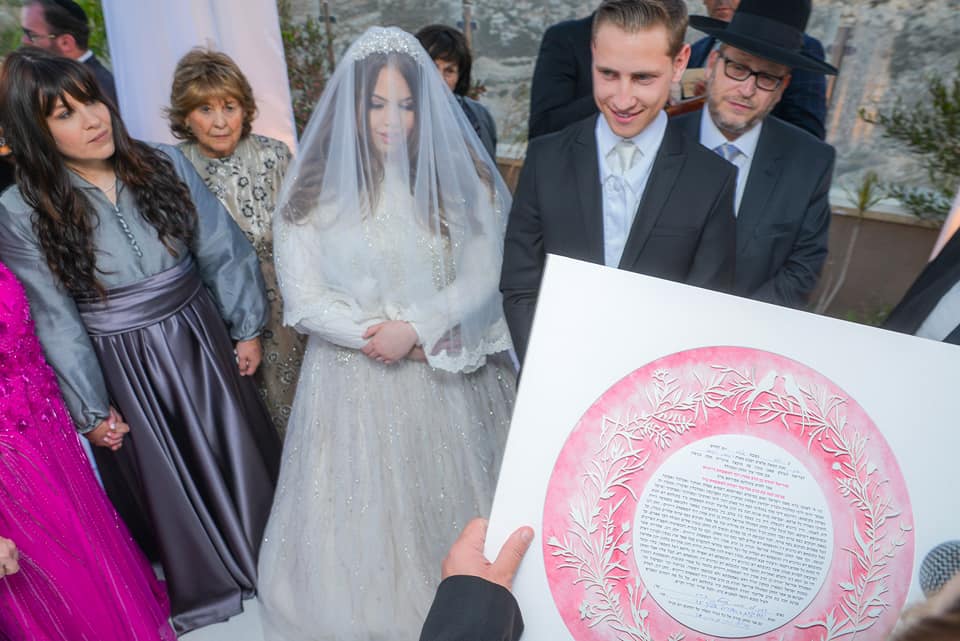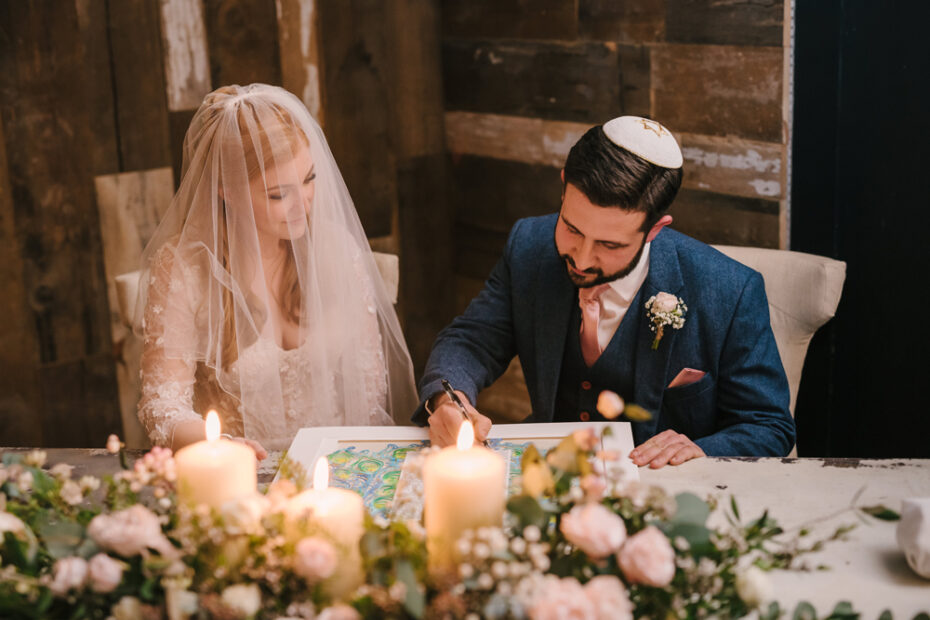This review explores the significant role of Ketubahs in interfaith marriages within the United States, shedding light on their relevance in promoting unity, harmony, and mutual respect. It delves into the historical background of Ketubahs and their evolution, how they are utilized in interfaith marriages, the positive impacts they bring, and the potential challenges faced.
1. 'What Is a Ketubah?': The Historical and Cultural Significance
A ketubah is a traditional Jewish marriage contract that holds deep historical and cultural significance. It is not simply a legal document, but rather a sacred and symbolic representation of the bond between a husband and wife. The origins of the ketubah can be traced back thousands of years to ancient Jewish customs. It serves as a tangible reminder of the commitment made by the couple and outlines their rights and responsibilities within the marriage.
The ketubah is typically adorned with intricate calligraphy, beautiful artwork, and meaningful symbols. It is often displayed prominently in the couple's home as a constant reminder of their love and commitment to one another. The text of the ketubah is written in Aramaic, the language of the Talmud, and it outlines various obligations, such as providing for the wife's well-being and ensuring her financial security.
In addition to its legal and financial aspects, the ketubah also holds cultural and emotional significance. It encapsulates the values and traditions of the Jewish faith, emphasizing the importance of commitment, love, and respect within a marriage. The ketubah ceremony itself is a meaningful and joyful occasion, where the couple, along with their families and friends, come together to witness the signing of the contract. This act serves as a public declaration of their intentions and solemnizes their union in the eyes of both their religious community and the law.

1. An illustration of a traditional Jewish Ketubah highlighting its unique artistic designs and Hebrew inscriptions.
2. 'How is a Ketubah incorporated in Interfaith Marriages?'
In interfaith marriages, the incorporation of a ketubah can be a meaningful and inclusive way to celebrate the union of two individuals from different religious backgrounds. There are several ways in which a ketubah can be adapted to reflect the unique dynamics of an interfaith relationship.
- 1. Customized Text:
One way to incorporate a ketubah in interfaith marriages is by customizing the text to include elements from both partners' religious traditions. The couple can work with a knowledgeable rabbi or officiant to create a ketubah that respects and acknowledges their diverse beliefs. This may involve incorporating prayers or blessings from both religions, or even writing the text in multiple languages. - 2. Symbolic Artwork:
Another way to incorporate a ketubah in interfaith marriages is through the use of symbolic artwork. The couple can choose artwork that represents both of their religious traditions, such as symbols, motifs, or imagery that holds significance to both partners. This can visually demonstrate the blending of their beliefs and serve as a reminder of their shared values and aspirations. - 3. Joint Ceremony:
A ketubah can also be incorporated into a joint ceremony that encompasses elements from both religious traditions. For example, the couple can have a wedding ceremony that includes both Jewish and Christian rituals, with the ketubah signing serving as a central and unifying moment. This allows the couple to honor their individual backgrounds while creating a new shared tradition that celebrates their union.
3. 'The Positive Impacts: How Do Ketubahs Foster Unity and Respect in Interfaith Marriages?'
Ketubahs play a significant role in fostering unity and respect in interfaith marriages. They serve as a powerful symbol of the couple's commitment to honor and respect each other's religious beliefs. Here are three ways in which ketubahs contribute to building unity and respect in interfaith marriages:
- 1. Shared Values and Commitments:
The process of creating a ketubah encourages open and honest communication between partners about their religious beliefs, values, and expectations. Through this process, couples gain a deeper understanding of each other's beliefs and establish a foundation of shared values and commitments. By incorporating elements from both partners' religious traditions, the ketubah represents the coming together of two distinct faiths and the commitment to navigate their differences with respect and understanding. - 2. Ritual and Tradition:
The inclusion of a ketubah in the wedding ceremony provides an opportunity for the couple to participate in a shared ritual that holds significance in both of their religious traditions. This shared experience helps to strengthen their bond and creates a sense of unity. The act of signing the ketubah together, surrounded by family and friends, reinforces the importance of mutual respect and understanding. It also sends a powerful message to their loved ones that their interfaith marriage is built on a foundation of unity and acceptance. - 3. Daily Reminder:
The presence of a ketubah in the couple's home serves as a daily reminder of their commitment to each other and their shared values. It acts as a visual representation of the love and respect that exists within their interfaith marriage. Seeing the ketubah displayed prominently in their home can serve as a source of inspiration during challenging times, reminding them of the importance of unity and respect in their relationship.

3. A heartwarming image of an interfaith family gathered around their Ketubah, symbolizing unity and mutual respect.
4. 'Does it Always Work?': An Inquiry into the Challenges and Future Directions
Interfaith marriages, despite the inclusion of ketubahs, can still face challenges. One of the main difficulties is navigating the differences and potential conflicts that arise from combining two distinct religious backgrounds. Each partner may have different expectations, practices, and beliefs, which can lead to misunderstandings and disagreements. It requires ongoing communication, compromise, and a willingness to learn and understand each other's perspectives.
Furthermore, societal and family pressures can also present obstacles in interfaith marriages. Some families may struggle to accept or understand the choice to marry outside of their religious tradition. This can create tension and strain on the relationship, as the couple must navigate between their own desires and the expectations of their families.
Another challenge is finding a balance in the religious practices and traditions within the home. It can be challenging to incorporate both partners' religious customs and rituals in a way that feels authentic and meaningful to each individual. This requires open-mindedness, flexibility, and a willingness to create new traditions that honor both faiths.
However, despite these challenges, interfaith marriages have the potential for growth and enrichment. By embracing the diversity of their backgrounds, couples can create a unique blend of traditions that celebrate their shared values and respect for each other's faiths. Additionally, seeking support from interfaith communities, religious leaders, or couples who have successfully navigated similar challenges can provide guidance and encouragement.
In conclusion, Ketubahs play a fundamental role in interfaith marriages in the United States, serving as a unifying symbol that fosters understanding and respect between diverse religious backgrounds. Despite the challenges, embracing Ketubahs in interfaith marriages fosters tolerance, openness, and the freedom to honor one's roots while building a shared future.
https://noaattias.com/
